La Dama de Elche
Lady of Elche in Lliria
The most famous Iberian sculpture and one of the great masterpieces of all time. The sculpture appears to have been cut and may well have originally been a standing figure. Her unique headdress probably was ceremonial dress.
The finely-rendered face has the appearance of a portrait.A closeup view of her face
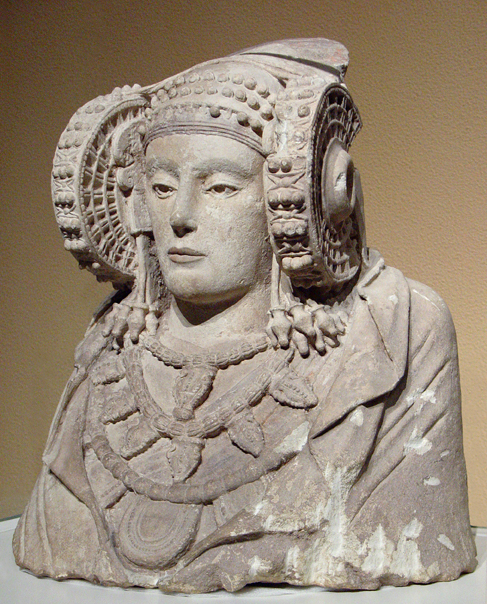
The Lady is carved from limestone which still bears traces of paint. This side view shows the wheel-like adornments which may have been constructed of basketry or of metal. This sculpture shows that the Spanish mantilla goes back some 24 centuries. A similar peaked headdress topped with a veil was worn in Tunisia into modern times. The jewelry, too, has Phoenician and Carthaginian analogues.
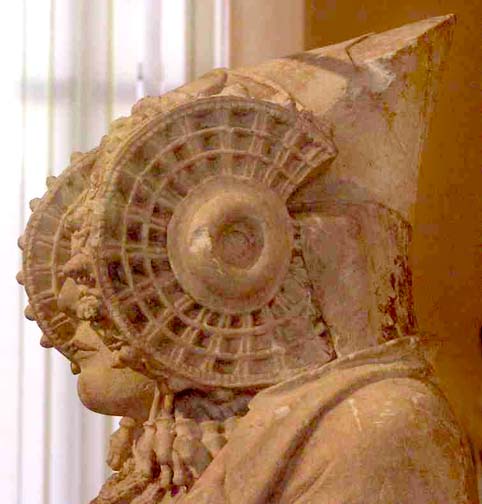
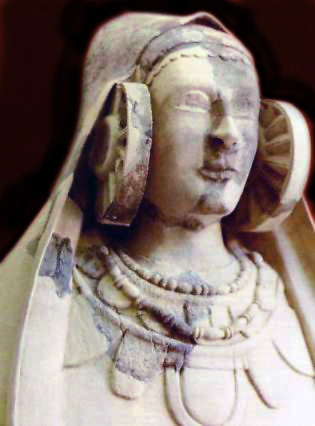
The Lady of Cabezo Lucero (also known as Lady of Guardamar) was discovered in 1987 at a Phoenician site of the same name in Guardamar del Segura, Alicante, Spain. The heavily-damaged sculpture has the same wheel-ornaments as the Elche Lady, but is more archaic in style. She dates to around 400 to 370 bce.
This fragmentary head from El Corral de Saus shows a different kind of headdress, beautifully patterned, with long pendants beside the ears.
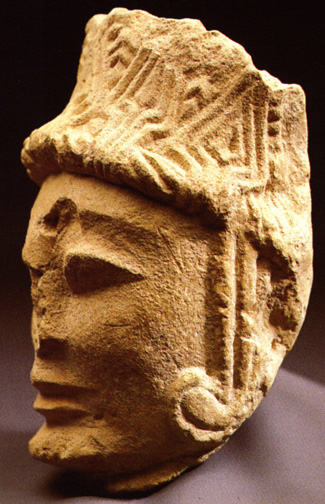
A head from Alicante, circa 500 BCE. The feather-like pattern of the crown is found in Canaanite and Greek art, where it appears in headdresses of goddesses.
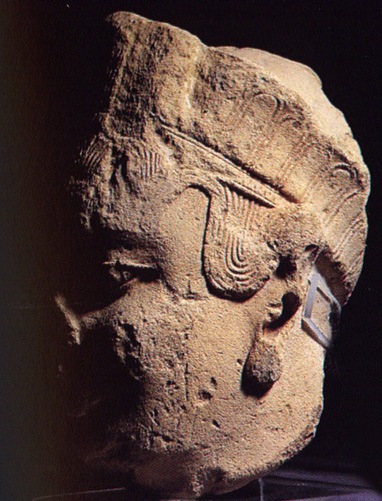
Baza>>